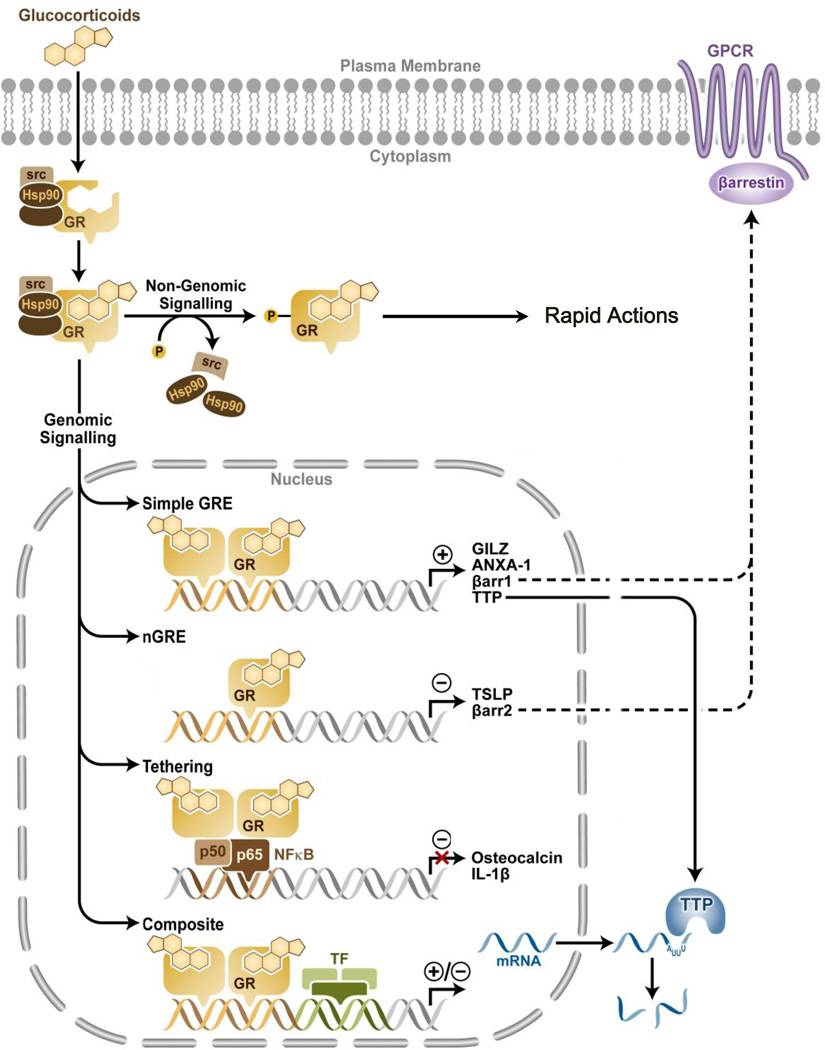Figure 3.
Glucocorticoid Receptor Signaling. Upon binding glucocorticoids, cytoplasmic GR undergoes a confirmational change, becomes hyperphosphorylated (P), dissociates from accessory proteins, and translocates into the nucleus, where it can exert its actions through genomic mechanisms. Activated cytoplasmic GR is also known to exert its actions via non-genomic mechanisms. In the nucleus, GR enhances or represses transcription of target genes by direct binding to simple or negative GREs respectively, by tethering itself to other transcription factors, or in a composite manner by direct binding to GRE and interacting with other transcription factors. One of the mechanisms by which GR suppresses inflammation is by inducing TTP expression, which in turn binds to mRNA of pro-inflammatory gene expression and destabilizes them. GR modulates the gene expression of arrestins 1 & 2 to alter GPCR signaling.

